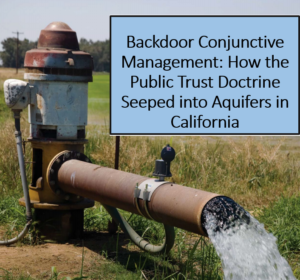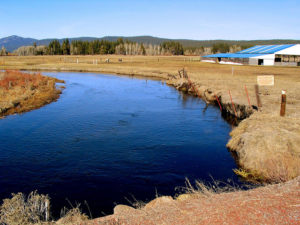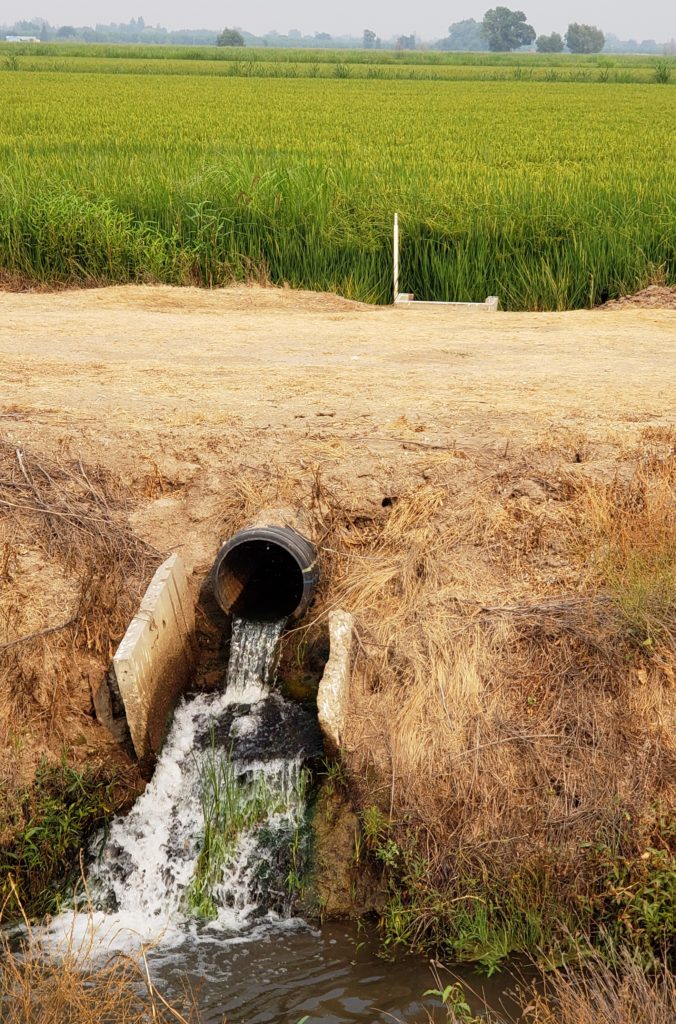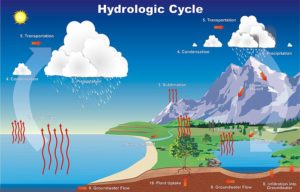Backdoor Conjunctive Management: How the Public Trust Doctrine Seeped into Aquifers in California

 The Public Trust Doctrine is seeping to California’s aquifers, bringing something like conjunctive surface water and groundwater management to the state. Conjunctive management is a legal approach to managing surface water and groundwater as an interconnected resource. Often states separate the regulation of groundwater from surface water. Conjunctive management attempts to reconnect the regulation of surface water and groundwater to better match real-world hydrological effects.
The Public Trust Doctrine is seeping to California’s aquifers, bringing something like conjunctive surface water and groundwater management to the state. Conjunctive management is a legal approach to managing surface water and groundwater as an interconnected resource. Often states separate the regulation of groundwater from surface water. Conjunctive management attempts to reconnect the regulation of surface water and groundwater to better match real-world hydrological effects.
Groundwater often supplies water to rivers, called “baseflow” within a “gaining reach,” and pumping can reduce groundwater’s contribution to surface streams. (See https://water.usgs.gov/edu/rivers-contain-groundwater.html). Likewise, surface water recharges aquifers in “losing reaches.” Regulating surface water and groundwater together is a relatively new development in water law, as legal systems catch up to modern scientific understanding. California has never adopted a groundwater code, let alone explicitly adopt conjunctive management.
The passage of California’s Sustainable Groundwater Management Act in 2014 ushered in new planning and review scheme for groundwater use and management in the State. (https://www.water-law.com/groundwater-sustainability-plan-regulations/ ). The legislation attempts to prevent “undesirable effects” of groundwater overconsumption and bring groundwater use into a sustainable pattern. Cal. Water Code § 10721(x)(1)-(6).
Regulation of surface water in California has been affected by the Public Trust Doctrine. Nat’l Audubon Soc’y v. Superior Court explicitly recognized that the Public Trust Doctrine would supplement statutes governing surface water. 33 Cal. 3d 419 (1983) (“Audubon”). (The Public Trust Doctrine is a well-established principle in California that the State hold certain resources in trust for the benefit of the public, and must take these principles into account when making natural resource decisions.) The case dealt with diversions from non-navigable streams flowing into Mono Lake that is “navigable” under state law. The Court found support for the application of the Public Trust Doctrine to non-navigable tributaries in previous cases like Audubon, showing that the doctrine can reach upstream to prevent harms to downstream navigable streams and lakes.
In the recent decision Environmental Law Foundation v. State Water Resources Control Board, California’s Third District Court of Appeals held that the Public Trust Doctrine can apply to groundwater that is hydraulically connected to navigable surface waters, like a “tributary” to the surface stream. 237 Cal. Rptr. 3d 393 (2018) (“Control Board”). (Interestingly, this application of the Public Trust Doctrine implicitly favors surface water over groundwater sources, since the reasoning does not support finding surface water as “tributary” to groundwater sources).
Until Control Board, the courts did not apply the Public Trust Doctrine to groundwater, likely on the basis that aquifers are non-navigable. The court, using the reasoning found in Audubon, found groundwater extraction in the region near the Scott River would reduce surface flows and harm public trust interests in the navigable river. In effect, the Public Trust Doctrine would extend to any groundwater source that provides water, or has stopped providing water, to a navigable surface water body.
This follows a trend in applying surface water laws and regulations to groundwater. In Hawaii Wildlife Fund. v. County of Maui, the Ninth Circuit decided that discharges into groundwater could be regulated by the Clean Water Act. 881 F.3d 754 (9th Cir. 2018). Typically, the Clean Water Act does not apply to groundwater. See 80 Fed. Reg. 37054, 37099 (June 29, 2015). But since the aquifer was hydraulically connected to the Pacific Ocean, the aquifer was a “conduit” transporting pollutants to the sea. For more information, see: https://www.water-law.com/ninth-circuit-upholds-groundwater-conduit-theory/. Like the Public Trust Doctrine in Audubon, the Clean Water Act has begun to seep into aquifers as courts attempt to wrestle with modern hydrogeological science.
Will these rules seep into aquifer pore spaces as well? As discussed in previous blog posts, California courts are currently deciding if aquifer pore spaces are public or private property. (See https://www.water-law.com/who-owns-an-aquifer/). The Control Board decision adds another layer to the aquifer questions in California: Is there a public trust aspect to aquifer pore spaces that potentially hold (or held) groundwater? Or does the doctrine remain confined to the groundwater alone? Keeping the doctrine out of the pore spaces would be difficult, as aquifers are complex systems of transresources. (Transresource systems are interconnected, yet distinct, resources in a dynamic relationship, see https://www.water-law.com/new-associate-attorney-jakob-wiley-defends-collective-aquifer-governance-agreements/.) Scientifically, aquifers and groundwater are in a constant dynamic relationship. The legal question remains open whether aquifer pore spaces are public, like water, or private, like the land and geological materials that make up aquifers.
As the Public Trust Doctrine sinks into the aquifer, California courts and agencies may face pressure to implement “backdoor conjunctive management” through litigation and planning for Groundwater Sustainability Plans related to the Public Trust Doctrine. Groundwater Sustainability Agencies in California will likely have to take the Public Trust Doctrine into account as they develop and review Groundwater Sustainability Plans and make land use decisions for groundwater development. (See https://californiawaterblog.com/2018/10/07/the-public-trust-and-sgma/ ). While never adopting a groundwater code or conjunctive management regulations, California may then begin to regulate surface water and groundwater as a connected resource.
Make sure to stay tuned to Schroeder Law Offices’ Water Blog for more news that may affect you!





 Authored by: Valley Urricelqui
Authored by: Valley Urricelqui




